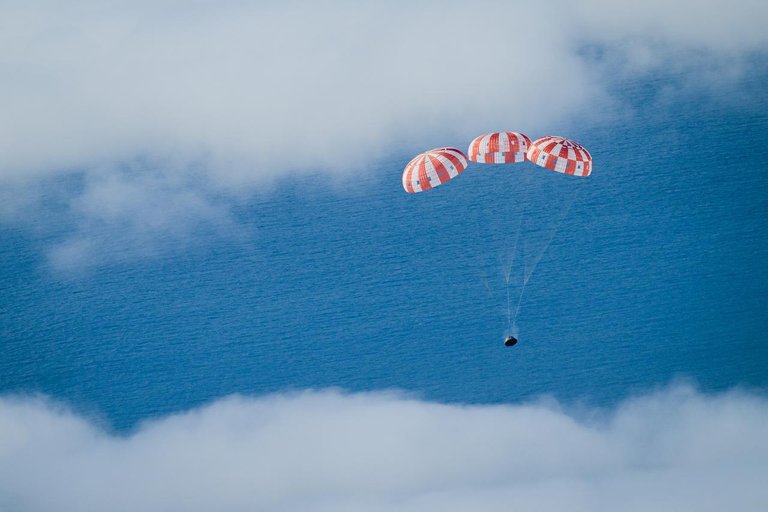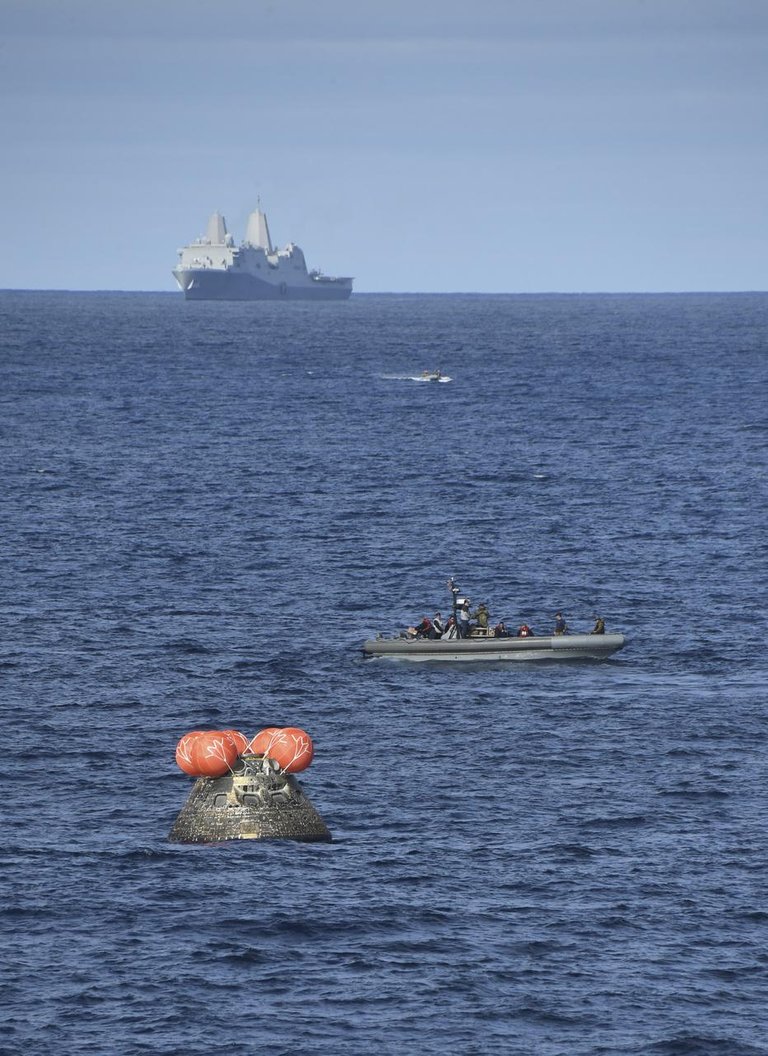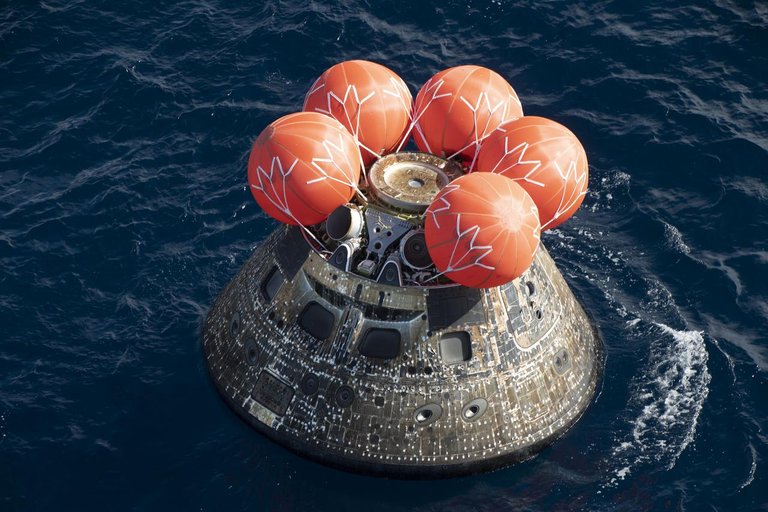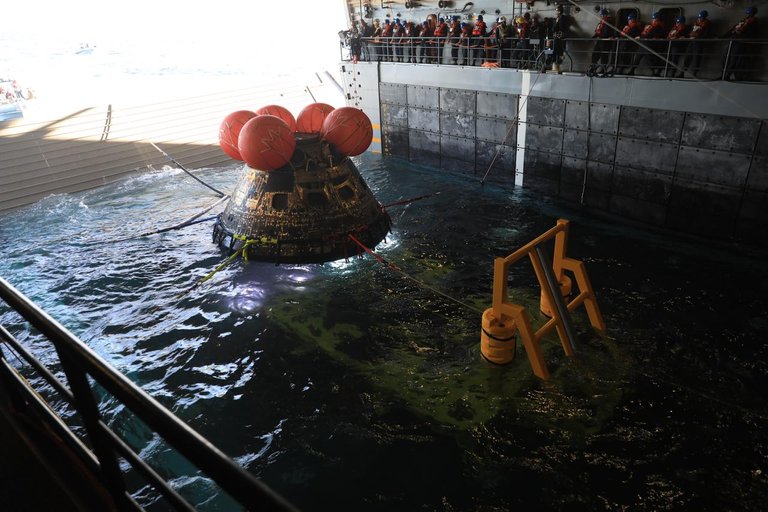On Sunday, December 11, 2022, at 12:40 EST, on its 26th day of flight, NASA's Orion spacecraft successfully completed the Artemis I mission by splashing down in the Pacific Ocean after spending just over 25 days on a mission around the Moon.

Orion Splashdown. Source: NASA image library
Although the end of the Orion spacecraft's journey began several hours earlier, with the sixth and last engine ignition to correct the return trajectory, this ignition was performed at 6:20 a.m. CST on Sunday 11, using the auxiliary engines for a period of 9 seconds, which accelerated the spacecraft to 0.68 mph, thus securing Orion's trajectory for its re-entry to Earth.
The landing site was chosen during the 23rd day of the mission (December 8), evaluating the weather conditions, NASA engineers opted for a splashdown in the Pacific Ocean, west of Baja California. For this purpose, the USS Portland was launched with a rescue team.

Orion in the Pacific Ocean with the USS Portland seen in the distance. Source: NASA image library.
But before splashdown, Orion had to complete several important maneuvers to make its reentry to Earth. At 11:00 a.m. CST, preparation of the crew module for its return began, which included the separation of the crew module from the service module, the latter to burn up in the atmosphere, as well as other remaining parts, the planned trajectory of Artemis I was prepared to avoid danger to people on Earth or navigation routes upon reentry to Earth.
With these maneuvers, Orion completed the last phase of the mission, a parachute-assisted splashdown in the Pacific Ocean after enduring the high temperatures during its re-entry into Earth's atmosphere, a crucial test that had to be passed if it plans to send crew on the next mission. Also tested was the crew module's righting system, a series of five bright orange bags filled with helium at the top of the capsule that inflate to right the spacecraft should it stabilize upside down.

View of the spacecraft with the module righting system deployed. Source: NASA image library.
After the capsule splashdown, mission engineers spent two hours conducting other tests while in the water, primarily evaluating the thermal properties of the spacecraft after enduring the embracing heat of reentry, before it was shut down for rescue by the recovery team that arrived at its location aboard the USS Portland. With that, the control team completed one of its two objectives for the final day of the mission, which was to test the vehicle under atmospheric reentry conditions.
The second objective was to demonstrate that the spacecraft could be recovered, and the recovery operation was conducted by a team of U.S. Department of Defense personnel, Navy amphibious specialists and NASA specialists, who also gathered on-site information about the spacecraft's condition. A team of divers then attached a cable called a winch and several additional grappling cables to the ship, which were used to pull Orion to the ship's deck.

Orion Recovery Operations. Source: NASA image library.
The Artemis I mission was the first deep space test of the Orion spacecraft, but also of several new systems, such as the new SLS rocket, navigation systems and ground support systems.
Now, through new and increasingly complex Artemis missions, NASA intends to establish a long-term presence on the Moon, to conduct new scientific experiments and also as a way to prepare for manned missions to Mars.
We look forward to seeing the progress made with the Artemis II mission next year.
Well friends, I hope you liked the information. See you next time!
References
NASA. Artemis I
